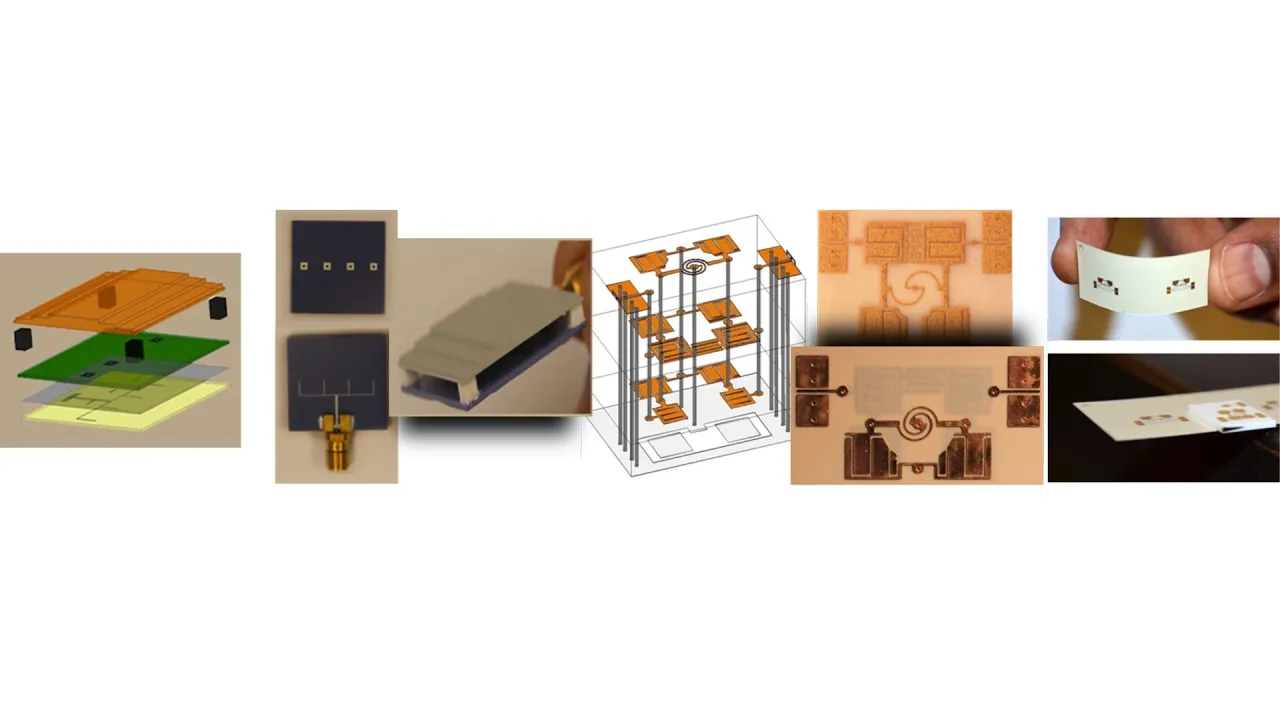
Miniaturized Circuits on LTCC & LCP for SoP Applications
All integrated circuits (IC) have to be packaged. Typically these packages are mere holders of the IC. These ICs are then mounted on system boards that contain lots of components, like passives, interconnections, power sources, etc. The system on package (SoP), is a new approach that brings in functionality into the package by realizing passive components inside the package.
Overview
All integrated circuits (IC) have to be packaged. Typically these packages are mere holders of the IC. These ICs are then mounted on system boards that contain lots of components, like passives, interconnections, power sources, etc. The system on package (SoP), is a new approach that brings in functionality into the package by realizing passive components inside the package. It also helps in achieving high-level system integration through vertically integrated components. Its ultimate goal is to integrate complete systems in a single, chip-sized package. To implement such a SoP, novel 3D packaging technologies are to be used such as low temperature co-fired ceramics (LTCC) and liquid crystal polymers (LCP).
LTCC is a mature technology and is widely used commercially. LCP, on the other hand, is an organic material that has excellent high-frequency characteristics. It has better compatibility with printed circuit boards (PCB), in terms of coefficient of thermal expansion, as compared to competing ceramic materials and is environment-friendly at the same time. Additionally, single layer LCP can bend to a certain extent and can be a good medium for flexible electronics. At present LCP fabrication processes are still struggling to employ a larger number of layers for multilayer designs.
In this project, we are trying to investigate the potential of both technologies by designing and testing novel RF front end components that are miniaturized and compatible with the SoP concept. The goal is to achieve miniaturized, low-power and cost-effective wireless devices for SoP systems.
Also, a novel SoP antenna (2.4 cm x 2.4 cm x 0.5 cm) has been designed for 24 GHz automotive radar applications. It utilizes a mixed LTCC tape system to integrate, for the first time, a fractal antenna array and an integrated grooved Fresnel lens. The lens has been realized in a high dielectric medium that makes it highly compact in size while providing considerable gain enhancement. The antenna front end exhibits a size reduction of more than 80% as compared to the conventional designs reported for this band. Moreover, it demonstrates a bandwidth of 8% with an overall gain of 15 dB which is quite suitable for typical radar communication range. The low-cost, high performance, compactness and robustness of the design makes it highly suitable for automotive radar applications.
